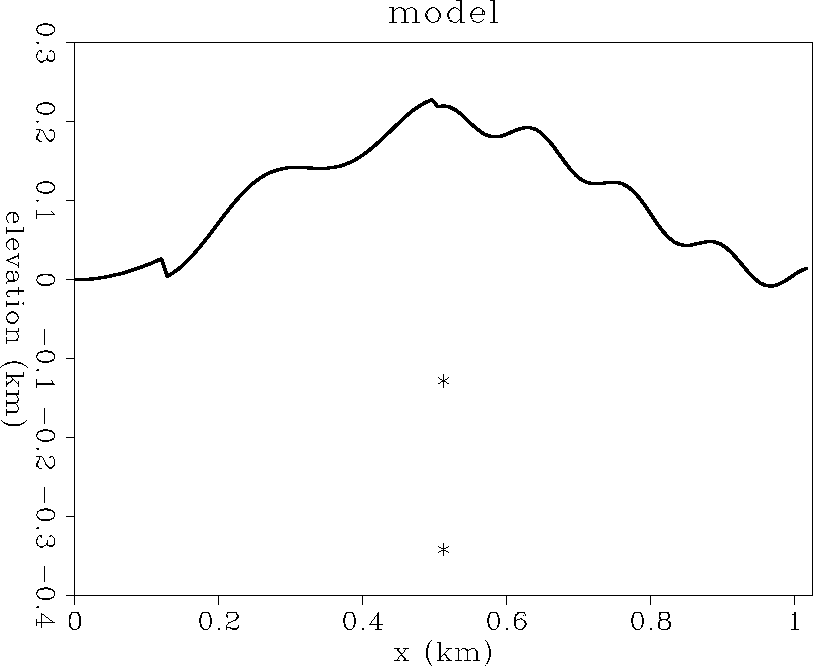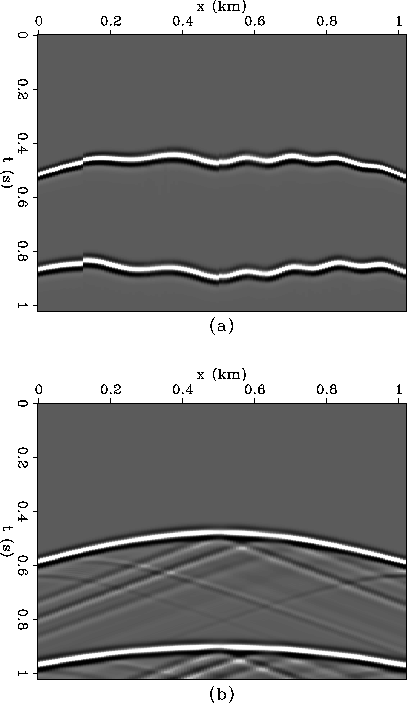|
shotmodel
Figure 10 Topography and subsurface structure used to generate the pre-stack synthetic data. |  |
The model used to generate the pre-stack synthetic data is displayed in Figure 10. The subsurface consists of two point diffractors under a topography which is more complicated than for the zero-offset case. The synthetic shot gather is generated using a pre-stack Kirchhoff routine with the shot placed directly above the diffractors at the top of the mountain. The effects of topography are clearly visible as undulations and discontinuities in the nonhyperbolic diffraction curves of Figure 11a.
|
shotmodel
Figure 10 Topography and subsurface structure used to generate the pre-stack synthetic data. |  |
Upward continuing the geophones to a planar datum above the mountain results in hyperbolic trajectories (Figure 11b). The moveout along these curves can now be used to determine the subsurface velocity structure. Some of the sharp features in the topography cause artifacts which are visible as diffractions after the main events. These artifacts would not add constructively in the velocity analysis.
 |